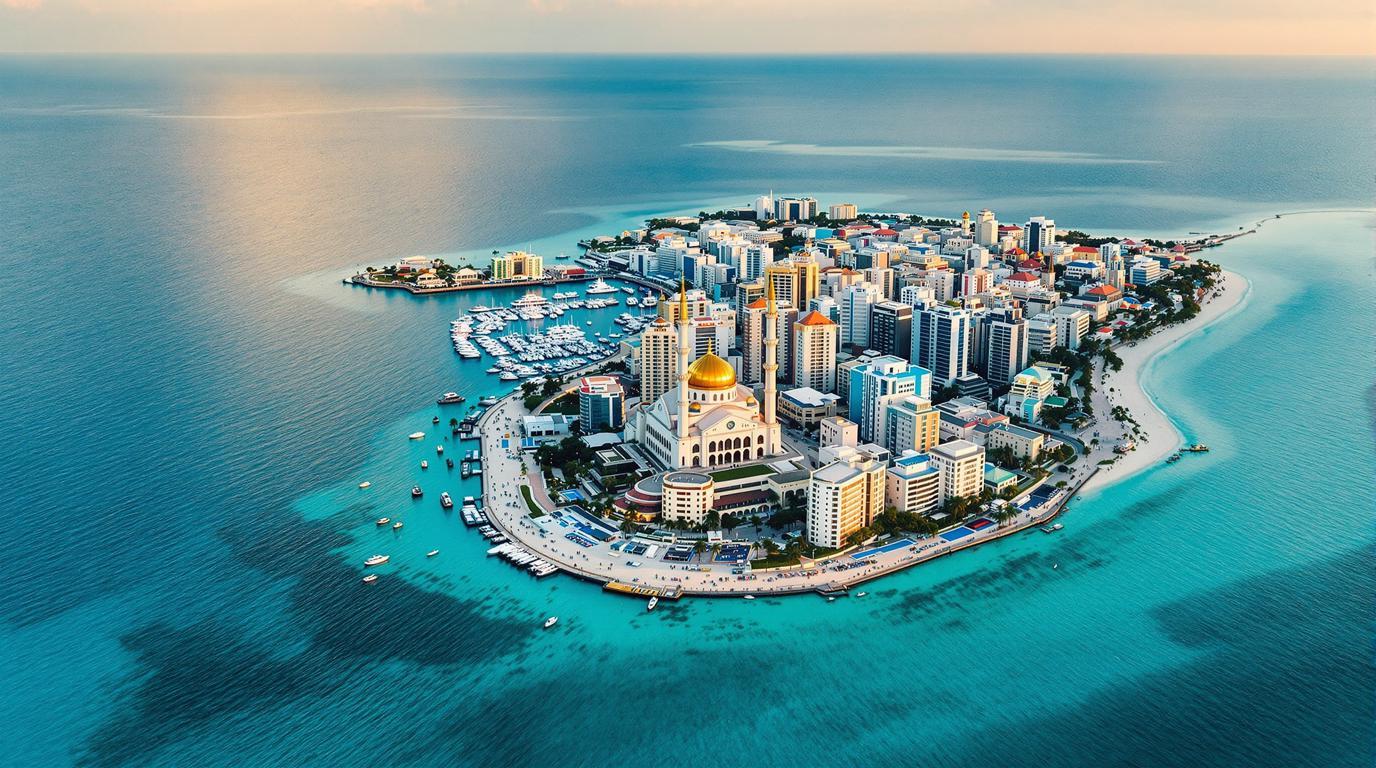Beyond the brochures and Instagram feeds lies the true Malé, capital of the Maldives and gateway to paradise. At 4.1755° N 73.5093° E, this tiny yet densely packed island city offers a fascinating counterpoint to the pristine isolation of the country’s resort islands. While most travelers rush through en route to their water villas, those who linger discover the beating heart of a nation spread across 1,200 islands.
The unexpected urban island
Malé defies expectations. Just 2.2 square kilometers of urban development packed with colorful buildings rising 10-12 stories high, it’s one of the world’s most densely populated capitals. From above, the city appears as a concrete oasis surrounded by the turquoise expanse of the Indian Ocean – a stark contrast to the palm-fringed resort islands nearby.
“Our capital may be small, but it contains our entire history,” explains Ibrahim, a local historian. “While tourists see only the resort side of Maldives, Malé shows you how one million Maldivians actually live.”
Islamic heritage meets island identity
The golden dome of the Grand Friday Mosque (Masjid al-Sultan Muhammad Thakurufaanu Al Auzam) dominates the skyline. This architectural marvel accommodates 5,000 worshippers and showcases the deep Islamic roots of Maldivian culture. Nearby stands the 17th-century Hukuru Miskiy (Old Friday Mosque), featuring intricate coral stone carvings – a UNESCO-protected treasure.
Markets that capture all senses
The Local Market and Fish Market offer an authentic slice of Maldivian life. Before dawn, fishermen arrive with their daily catch – primarily yellowfin tuna and skipjack – unloading massive specimens that fuel the nation’s cuisine. The sensory experience – briny sea air, animated haggling, and the metallic glint of fresh fish – provides a glimpse into local traditions absent from resort islands.
Culinary treasures beyond the buffets
Skip the tourist restaurants and head where locals eat. Maldivian cuisine centers around garudhiya (fish soup), mas huni (tuna with coconut), and hedhikaa (savory snacks). The Sea House café offers authentic dishes with harbor views, while Royal Garden serves fusion creations blending Maldivian flavors with international techniques.
The artificial beach paradox
Despite being surrounded by ocean, Malé created its own artificial beach on the eastern shore. This small stretch of imported sand becomes a social hub at sunset, with families gathering, teenagers playing soccer, and food vendors selling smoked fish. It’s where locals escape the concrete jungle, much like New Yorkers flock to Central Park.
Island-hopping with purpose
Take a 10-minute ferry to Villingili, a quieter residential island with beaches and bicycles for rent. More adventurous travelers might consider a trip to Maafushi, where guesthouses offer budget-friendly alternatives to luxury resorts while supporting conservation efforts.
Conservation beyond the postcards
The Maldives Marine Research Centre documents rising sea levels threatening this low-lying nation. Visitors can learn about coral restoration projects and how climate change impacts island nations. Conservation-minded travelers might time their visit to coincide with community coral planting initiatives that transform participants into environmental stewards.
Travel smart, save big
Malé serves as the perfect gateway to explore the Maldives on a budget. Consider visiting during shoulder season (May or November) when flight prices drop significantly and weather remains favorable. Local ferries cost less than $2 between many islands, compared to $200+ speedboat transfers to private resorts.
Wildlife encounters beyond expectations
While the Maldives doesn’t have tigers, its marine life rivals any safari experience. Day trips from Malé to nearby reefs offer encounters with reef sharks, manta rays, and vibrant coral gardens. These accessible adventures provide experiences comparable to discovering hidden wildlife sanctuaries in other parts of Asia.
“The real Maldives exists in the space between the luxury resorts and local islands,” shares Farah, a Malé tour guide. “Understanding our capital helps you understand our struggles, our resilience, and our hope.”
As sunset paints the skyline in amber hues, Malé reveals itself not as a mere transit point but as the cultural anchor of a nation defined by water. Here, traditions endure, daily life unfolds, and the essence of Maldivian identity thrives – all while floating on the edge of a changing world, offering travelers willing to look beyond the brochures a glimpse into paradise’s complex reality.
